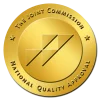Dual diagnosis, also known as a co-occurring disorder, occurs when an individual experiences both a mental health disorder and a substance use disorder simultaneously. These conditions can interact in ways that complicate the diagnosis and treatment of each other. For example, someone with depression might use alcohol to cope with their symptoms, which can lead to alcohol dependence. On the other hand, substance use can worsen or trigger mental health disorders.
Dual diagnosis is more common than one might think. According to the 2019 National Survey on Drug Use and Health from the Substance Abuse and Mental Health Services Administration (SAMHSA), approximately 9.5 million adults in the United States had co-occurring disorders. This high prevalence demonstrates that people with mental health disorders are more likely to experience substance use disorders and vice versa, highlighting the need for integrated and comprehensive treatment approaches.
Common Signs and Symptoms of Co-Occurring Disorders
It can be difficult to identify co-occurring disorders since the symptoms of mental health disorders and substance use disorders can overlap and influence each other. However, there are some signs and symptoms that may indicate the presence of co-occurring disorders.
Behavioral Changes
- Sudden changes in behavior, such as increased aggression or irritability.
- Significant shifts in social activities, withdrawing from friends and family.
- Engaging in risky behaviors more frequently.
Emotional Instability
- Intense mood swings, ranging from extreme highs to deep lows.
- Persistent feelings of sadness, hopelessness, or worthlessness.
- Heightened anxiety or panic attacks without a clear trigger.
- Cognitive impairments.
- Difficulty concentrating or maintaining focus.
- Memory problems or frequent forgetfulness.
- Disorganized thinking or trouble making decisions.
Physical Symptoms
- Noticeable weight changes, either gain or loss, without an apparent cause.
- Poor personal hygiene or neglecting self-care routines.
- Unexplained physical ailments or complaints of chronic pain.
Substance Use Patterns
- Increased tolerance to substances, requiring more to achieve the same effect.
- Experiencing withdrawal symptoms when not using the substance.
- Using substances as a way to cope with stress, anxiety, or other mental health symptoms.
Social and Occupational Problems
- Decline in performance at work or school, including absenteeism or lack of productivity.
- Strained relationships with family members, friends, or colleagues.
- Isolation from social circles and loss of interest in previously enjoyed activities.
Legal and Financial Issues
- Frequent legal problems, such as arrests or citations related to substance use.
- Financial difficulties stemming from spending on substances or loss of employment.
- Engaging in illegal activities to obtain substances.
Psychiatric Symptoms
- Hallucinations or delusions, indicating a potential psychotic disorder.
- Paranoia or severe mistrust of others.
- Suicidal thoughts or behaviors requiring immediate intervention.
Due to the complexity of dual diagnosis, professional evaluation by a health care provider is crucial. Mental health professionals can conduct comprehensive assessments to determine the presence of co-occurring disorders.
Risk Factors for Co-Occurring Disorders
Certain factors can increase the risk of developing a co-occurring disorder. These include:
- Genetics. A family history of mental health disorders or substance use disorders can increase an individual’s risk of developing similar conditions.
- Environmental factors. Exposure to trauma, stress, abuse, or neglect during childhood can contribute to the development of both mental health and substance use disorders.
- Brain chemistry. Imbalances in brain chemistry can play a role in the development of mental health disorders, which can, in turn, lead to substance use as a coping mechanism.
- Chronic stress. Ongoing stress, whether from personal, professional, or social sources, can increase the risk of developing both mental health and substance use disorders.
- Early substance use. Using drugs or alcohol at an early age can interfere with brain development and increase the likelihood of developing a substance use disorder and potentially a mental health disorder.
Treatment Options for Dual Diagnosis
Treating someone with a dual diagnosis requires addressing both the mental health disorder and the substance use disorder simultaneously. Medications can be prescribed to manage symptoms of mental health disorders and reduce cravings or withdrawal symptoms associated with substance use disorders. In addition, therapy and counseling may also benefit someone with a dual diagnosis.
Therapy may consist of:
- Cognitive behavioral therapy (CBT), which helps individuals understand the relationship between their thoughts, feelings, and behaviors and develop healthier coping mechanisms.
- Dialectical behavior therapy (DBT), which focuses on emotional regulation, interpersonal effectiveness, and distress tolerance, all of which can be particularly beneficial for individuals with co-occurring disorders.
- Support groups, such as Alcoholics Anonymous (AA), Narcotics Anonymous (NA), and Dual Recovery Anonymous (DRA), that provide peer support and a sense of community for individuals with dual diagnosis.
To manage co-occurring disorders, incorporating holistic therapies, such as yoga, meditation, and art therapy, can support overall well-being and stress management. Are you or a loved one struggling with a mental health disorder and a substance use disorder? At Creekside Behavioral Health in Kingsport, Tennessee, we offer programs and services such as acute psychiatric inpatient care with medication management, individual therapy, group therapy, and family therapy. To learn more about how we can help your loved one, please contact us today.







